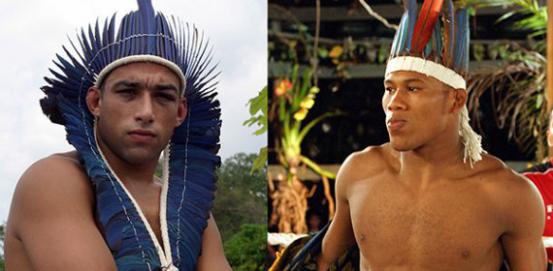- Commissioner’s statement on Ventura, Marte
- Ronnie O’Sullivan: Masters champion ‘felt so vulnerable’ in final
- Arron Fletcher Wins 2017 WSOP International Circuit Marrakech Main Event ($140,224)
- Smith challenges Warner to go big in India
- Moncada No. 1 on MLB Pipeline’s Top 10 2B Prospects list
- Braves land 2 on MLB Pipeline’s Top 10 2B Prospects list
- Kingery makes MLB Pipeline’s Top 10 2B Prospects list
- New Zealand wrap up 2-0 after Bangladesh implosion
- Mathews, Pradeep, Gunathilaka to return to Sri Lanka
- Elliott hopes for rain for Poli
Vale Tudo Relics: Beginnings from the Amazon Rainforest
- Updated: May 13, 2016

Fabricio Werdum and Ronaldo Souza will star in the two most significant fights at UFC 198 on Saturday in Curitiba, Brazil. There, Werdum defends the Ultimate Fighting Championship heavyweight title against Stipe Miocic in the main event, while Souza faces Vitor Belfort in a co-headliner that could decide the next No. 1 contender for the UFC middleweight crown. In the latest installment of the Vale Tudo Relics series, Sherdog.com travels back some 13 years to Jungle Fight 1, an event promoted by Wallid Ismail and Antonio Inoki on Sept. 13, 2003. It was there, in the middle of the Amazon Jungle, that Werdum and Souza each fought on Brazilian soil for the first time. The show also featured Lyoto Machida’s meeting with Stephan Bonnar, along with American wrestling legends Mark Schultz and Rico Chiaparelli in separate bouts against Brazilian jiu-jitsu specialists.A New Stage Anyone who sees Jungle Fight recognizes it as one of the most successful Brazilian MMA promotions, responsible for launching some of the best fighters from Brazil into the UFC. No one could have foreseen its success from such humble beginnings. Ismail retired from MMA and jiu-jitsu in 2002 and met Inoki on a flight from Japan to Los Angeles. During the long flight, the Japanese legend told Ismail about his ecological concerns about Brazil and the ongoing destruction of its rainforest. Ismail informed Anoki that he had been born in the Amazon and wanted to organize a mixed martial arts event there. Inoki liked the idea, entered into a partnership with Ismail and agreed to help him promote his first show on one condition: The event was to take place in the middle of the Amazon Jungle and had to be broadcast live to Brazil, the United States and Japan in an effort to bring global attention to the “world’s lungs.” Even with no promotional experience, Ismail jumped at the chance, and a few weeks later, he settled on the amazing Hotel Ariau Towers as the venue. Located a little more than 40 miles from Manaus, the hotel sits on huge stilts and is made up of eight wooden towers connect by almost five miles worth of footbridge. Getting there was difficult enough. Imagine the trouble associated with transporting the infrastructure necessary to promote an MMA event featuring 12 fights. Along with the 24 fighters and their teams, television equipment, power generators and a live event staff of almost 150 people had to be put in place. The thought of holding an event in such a setting would give even the most experienced promoter pause, much less someone who had never even organized a small jiu-jitsu competition. Jungle Fight 1 had all the ingredients to go down as one of the greatest disasters in MMA history. To bring the show to life, Ismail and Inoki booked fighters from all corners of the world and invited the most reputable MMA journalists from Brazil, Japan and the United States. “We had close to 150 people,” Ismail said. “We had to split everyone into two huge boats and more than 50 rooms. It was pure madness.” After he spent two hours on a boat weaving through the heart of the Amazon rainforest on the Rio Negro, Ismail checked to see how the arena was coming along and whether or not the ring had been set up. He then ran into his first problem. The height from the ring canvas to the straw roof covering the improvised arena was less than seven feet, meaning the 6-foot-8 Ricardo Morais could not fit into the confined space for his match with Mestre Fumaca. As a result, two days before the event, organizers decided to take apart the ring and saw off four inches from four structural beams in order to give the Brazilian giant the room he needed. After solving the first issue, Ismail gathered together everyone for a rules meeting in an auditorium at a nearby restaurant. There was one glitch: Ismail had not discussed the rules with Marcus Vinicius Di Lucia, the head referee, and only realized his oversight when international fighters began asking questions. Were soccer kicks or elbow strikes permitted? Ismail and Di Lucia looked at one another and decided. At that point, Chiaparelli realized what was happening and chimed in: “You’re making up the rules on the spot. This is rules making, not a rules meeting.” Despite the disorganization, everyone seemed to grasp the amount of effort Ismail was putting into pulling off the event. They did their …
continue reading in source www.sherdog.com
